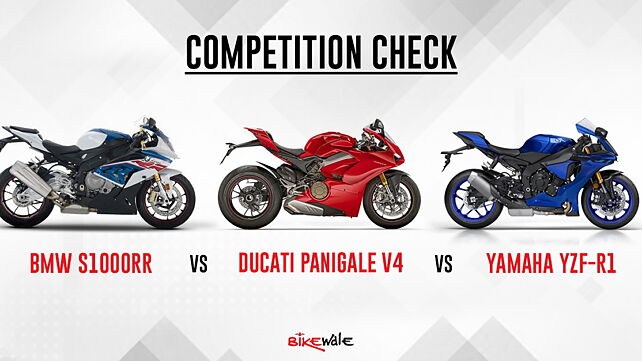
Having sold out the first lot, Ducati has now reintroduced its halo superbike, the Panigale V4, in India. However, in the cut-throat litre-class superbike segment, the Panigale V4 has to face heat from two formidable rivals, one from Germany and the other from Japan. We take a look at how the Panigale V4 stacks up against the BMW S 1000 RR and the Yamaha YZF-R1 on paper -
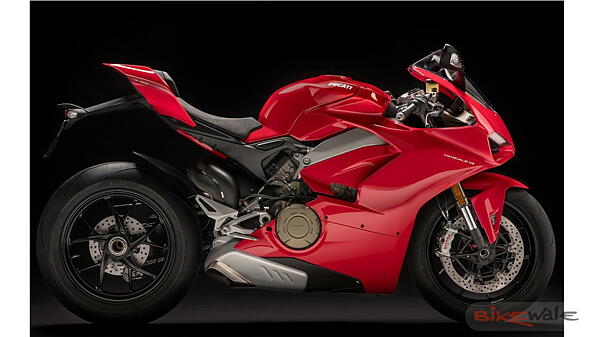
Design
When it comes to litre-class superbikes, aerodynamics plays a major role in styling the motorcycle. They feature massive fairings which attempt to hide their bulky four-cylinder engines, and raised and minimalistic tail sections. These motorcycles look like they are going 200kmph even when you have them mounted on a paddock stand. And yet, all three motorcycles here look radically different from each other. There is no way you are going to confuse one for the other.
The Panigale V4, true to its Italian lineage, gets artistic cues like the single-sided swingarm which show off the lightweight five-spoke alloy wheels. It is also the only motorcycle here to get an underbelly exhaust, which gives the tail section a clean look.
The original S 1000 RR will always be remembered for its trademark asymmetrical headlamp design, and the 2018 model continues to feature an evolution of that design. The massive fairing and the exhaust canister give the S 1000 RR a hefty look, although the vents and the lightweight alloys try to lend a sporty appeal. The YZF-R1 underwent a major cosmetic overhaul in 2015, drawing inspiration from the Yamaha YZR-M1 MotoGP race bike. The bike has chucked the curves for an edgy and sharp design language.
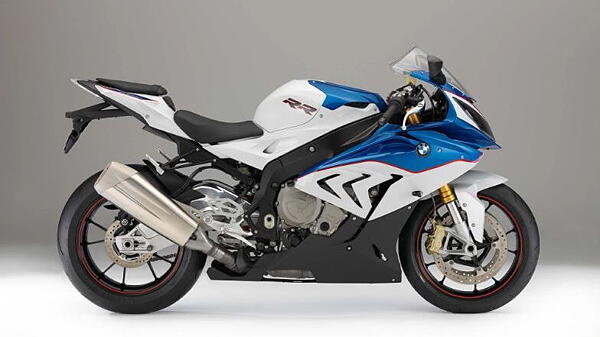
Engine
The Panigale V4 marks an important milestone in the Italian marque’s history. With this bike, Ducati has bid adieu to the L-twin architecture for its halo bike. At the heart of the Panigale is an 1103cc Desmosedici Stradale V4 engine that produces 211bhp and 124Nm of torque. The 90-degree V4 configuration makes the Desmosedici Stradale extremely compact, allowing low centralisation of mass.
The YZF-R1 is powered by a 998cc inline-four engine with a crossplane crank. The engine delivers 197bhp and 112Nm of torque. It is mated to a six-speed transmission and breathes out through a titanium exhaust system. Propelling the S 1000 RR is a 999cc inline four engine churning out 195bhp and 113Nm of torque. This is the least powerful engine among this lot, while the Panigale V4 benefits from the highest displacement and the power output.
Cycle parts
The Panigale V4 sources the 43mm inverted front forks from Showa while the rear monoshock is a Sachs unit. The YZF-R1 rides on 43mm inverted front forks and a rear monoshock, sourced from KYB. The S 1000 RR rides on beefier 46mm inverted front forks and a rear monoshock. The front and rear suspension on all three bikes are adjustable for compression, rebound and preload.
The Panigale V4 gets dual 330mm discs up front and a single 245mm disc at the rear. The S 1000 RR and the YZF-R1 use dual 320mm discs and a 220mm rear disc. The Panigale V4 and S 1000 RR source their callipers from Brembo. The YZF-R1 features unified braking system, which activates the rear brake when the front brake is applied depending upon the inputs from the IMU.
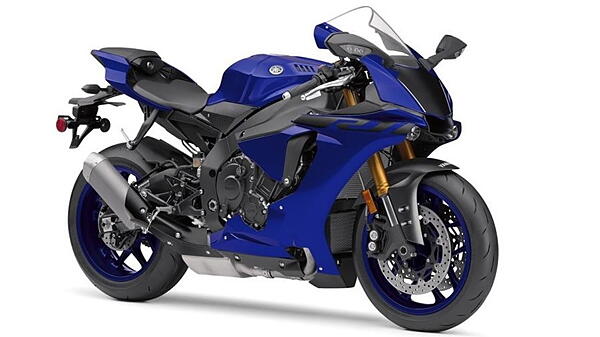
Electronics
All three bikes here rely on a Bosch inertial measurement unit (IMU) to get feedback from sensors spread across the bike, which in turn maintains a leash over the electronics. Although they have their own proprietary acronyms, the three bikes essentially get similar rider aids like riding modes, cornering ABS, traction control, slide control, wheelies control, launch control and quickshifters. The Panigale V4 additionally gets engine brake control, while the S 1000 RR features an optional ‘slick’ mode when you are running on track-spec slick tyres.
Pricing
The Ducati Panigale V4, despite getting tax sops for motorcycles imported from Thailand, is the most expensive motorcycle in this lot. It retails at Rs 20.53 lakhs. And if sky is the limit, you can splurge an additional Rs 4.7 lakhs on the V4 S variant. The BMW S 1000 RR is the most affordable bike here, and will set you back by Rs 17.9 lakhs. However, those opting for the track-focussed ‘Pro’ variant will have to shell out Rs 20.6 lakhs. The Yamaha YZF-R1 recently underwent a price cut and costs Rs 18.16 lakhs. Yamaha does have a track-focussed variant, called the YZF-R1M in its global portfolio, although it is not on sale in India. All prices are ex-showroom.

![Ducati Panigale V4 [2018-2019] Image Ducati Panigale V4 [2018-2019] Image](https://imgd.aeplcdn.com/272x153/bw/models/ducati-panigale-v4.jpg?20190103151915&q=80)
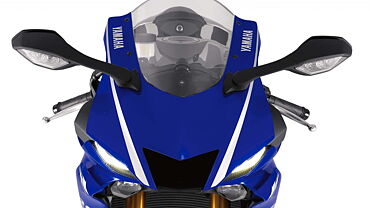
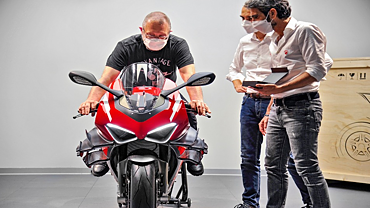
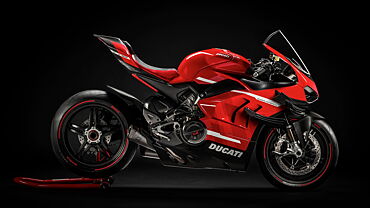
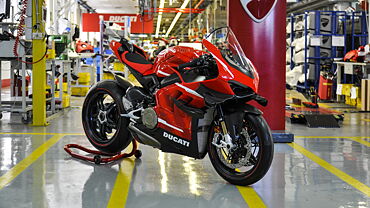
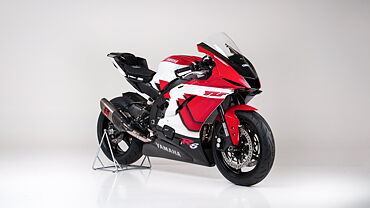

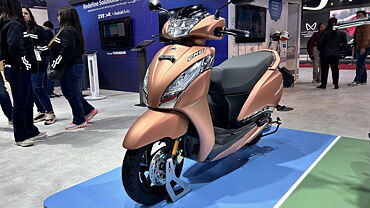
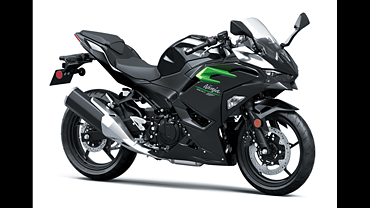
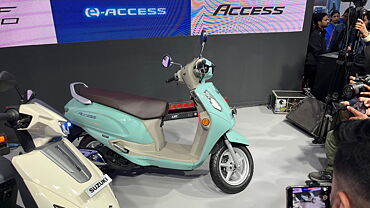
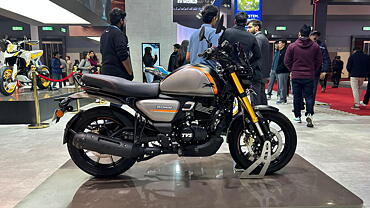



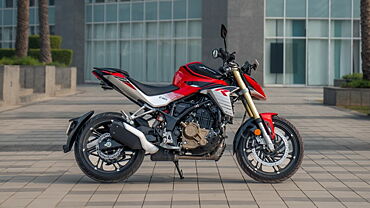

![Ducati Panigale V4 [2018-2019] Exterior Ducati Panigale V4 [2018-2019] Exterior](https://imgd.aeplcdn.com/199x112/bw/ec/39762/2019-BikeWale-TrackDay-Ducati-Panigale-V4-155970.jpg?wm=2&q=80)
![Ducati Panigale V4 [2018-2019] Exterior Ducati Panigale V4 [2018-2019] Exterior](https://imgd.aeplcdn.com/199x112/bw/ec/39762/2019-BikeWale-TrackDay-Ducati-Panigale-V4-155981.jpg?wm=2&q=80)
![Ducati Panigale V4 [2018-2019] Exterior Ducati Panigale V4 [2018-2019] Exterior](https://imgd.aeplcdn.com/199x112/bw/ec/39762/2019-BikeWale-TrackDay-Ducati-Panigale-V4-155991.jpg?wm=2&q=80)
![Ducati Panigale V4 [2018-2019] Exterior Ducati Panigale V4 [2018-2019] Exterior](https://imgd.aeplcdn.com/199x112/bw/ec/39762/2019-BikeWale-TrackDay-Ducati-Panigale-V4-155990.jpg?wm=2&q=80)
![Ducati Panigale V4 [2018-2019] Exterior Ducati Panigale V4 [2018-2019] Exterior](https://imgd.aeplcdn.com/468x263/bw/ec/39762/2019-BikeWale-TrackDay-Ducati-Panigale-V4-155989.jpg?wm=2&q=80)

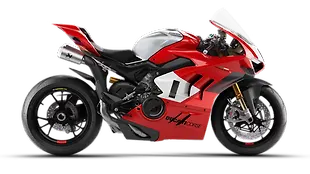
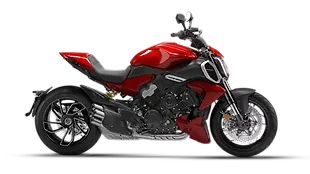





![KTM 390 Adventure X [2025] KTM 390 Adventure X [2025]](https://imgd.aeplcdn.com/272x153/n/cw/ec/190885/390-adventure-x-2025-right-side-view.jpeg?isig=0&q=80)